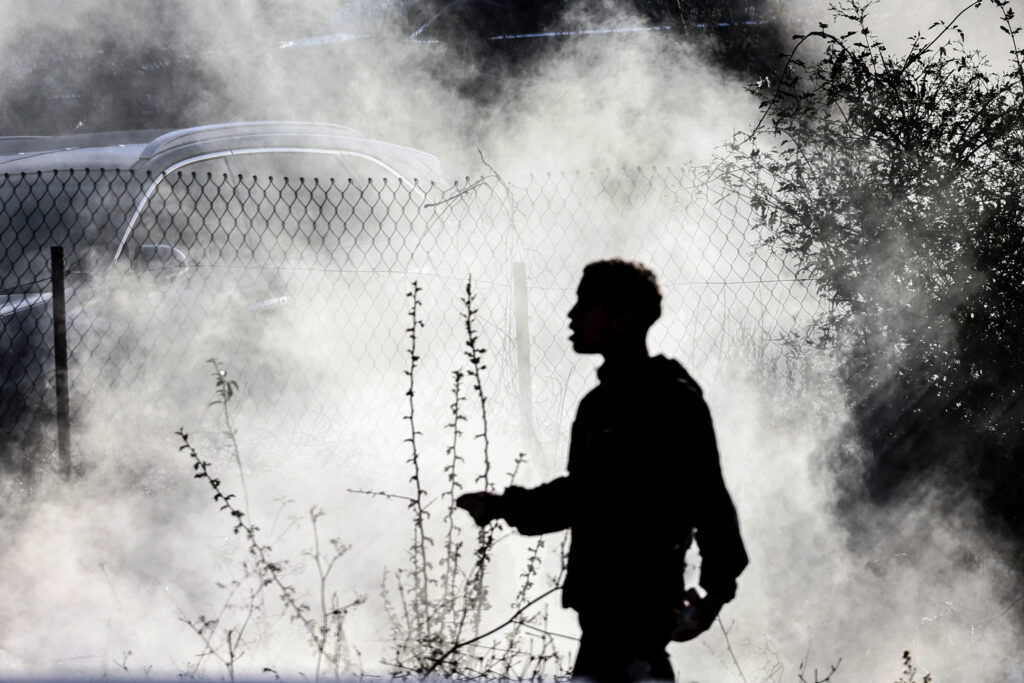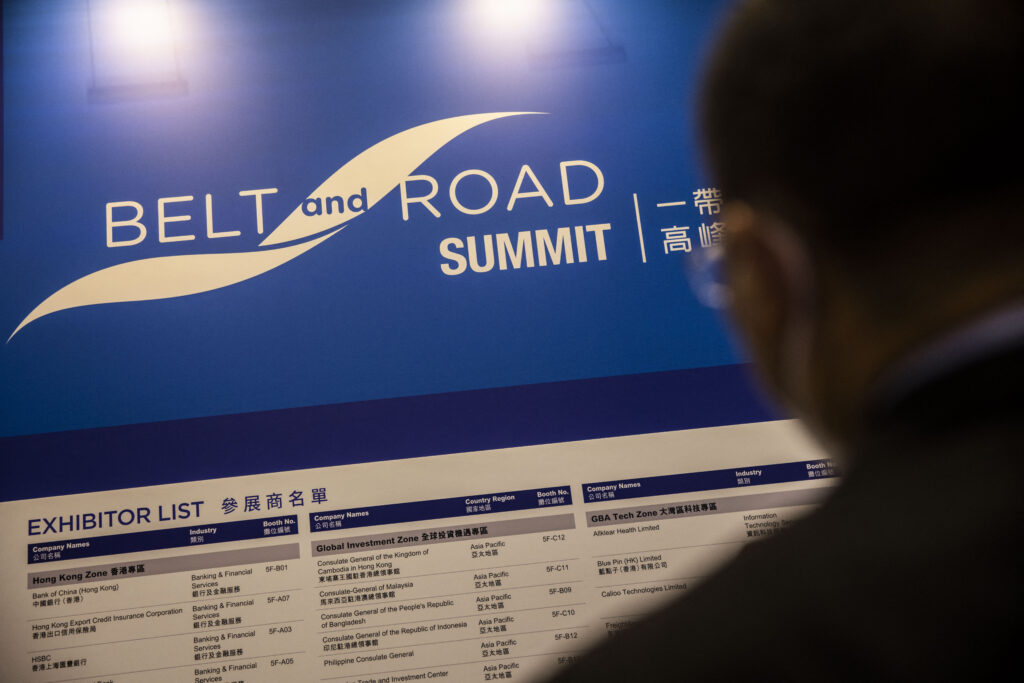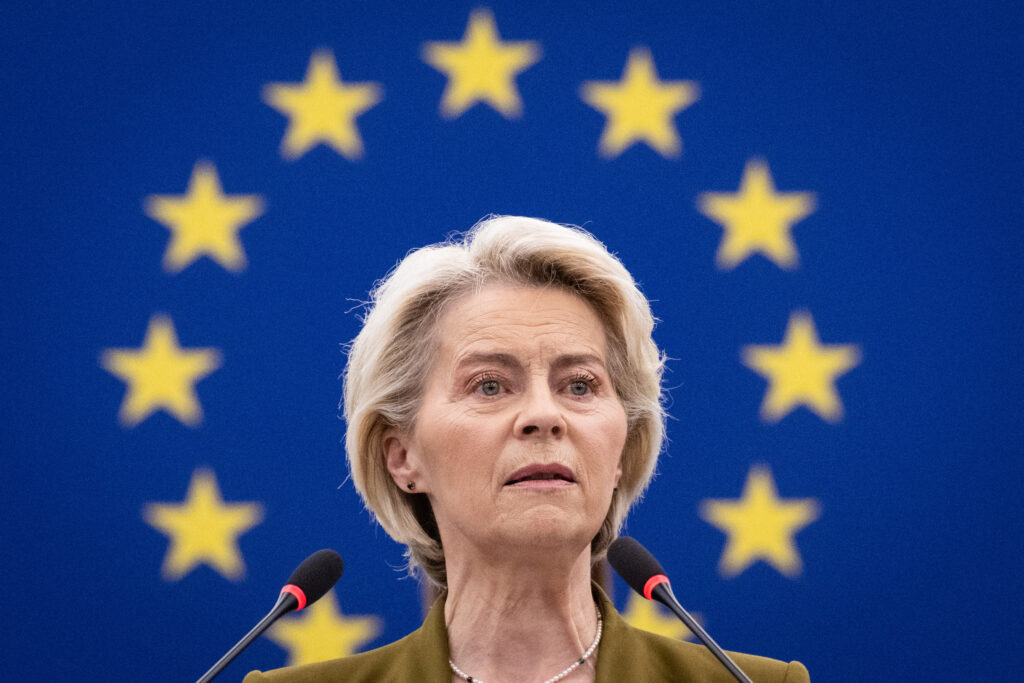By Mattia Tomba
The Gulf Dispute
On 5 June 2017, Saudi Arabia, The United Arab Emirates, Bahrain and Egypt (the Quartet) cut their relations with Qatar, withdrawing their ambassadors and imposing a travel and trade ban. The move may have seemed sudden, but the situation had already begun escalating weeks earlier. Days after the May visit of US President Donald Trump to Saudi Arabia, the Qatar News Agency was hacked, and statements in favour of Iran and Israel were attributed to the Emir of Qatar and his Minister of Foreign Affairs. Next, the Saudi Al Sheikh family, the Saudi Minister of Islamic Affairs Saleh bin Abdulaziz Al Ash-Shaikh and 200 prominent Saudis demanded that the main mosque in Doha – the Imam Abdul Wahaab mosque change its name. The argument was that Sheikh Hamad bin Khalifa Al Thani, the former Emir, had wrongly described himself as a descendent of Imam Abdul Wahhab. Moody’s then downgraded Qatar from an Aa2 to an Aa3 in the same month.
Reasons behind the Dispute
For two decades, Qatar has been able to develop policies independent of the rest of the GCC. With a small population, negligible minorities and a centralized state, Qatar has avoided the kind of ethno-religious tensions that have affected some of its neighbors. More importantly, as the only gas player in the region, Qatar’s massive gas reserves give the country financial strength and the ability to project power. Doha’s independent foreign policy includes support for regional Islamist groups and a pragmatic relationship with Iran with whom it shares the biggest gas field in the world. All this runs counter to the zero-tolerance policy of both Saudi Arabia and the UAE towards political Islam since the Arab Spring. For Qatar, being geographically located between Saudi Arabia and Iran has forced it to play a delicate balancing act even as Saudi Arabia seeks to limit Iranian influence in the region. For Saudi Arabia, a united GCC is necessary to counter Iran and Qatar thus had to fall in line.
So, the question is why has this happened now? Qatar’s resistance to Saudi pressure is not new but it appears that both Saudi Arabia and the UAE had finally reached a saturation point where they could no longer tolerate Qatar’s behaviour. It also appears that both felt emboldened to act after apparent tacit US approval. Saudi Arabia and the UAE appear to have calculated that this window of opportunity could not last long, hence they acted fast and hard, expecting Doha to bend to their demands. This clearly this did not happen.
What have been the effects, economically and politically?
Economic Impact of the Dispute
For Qatar, the Quartet bans have affected three main areas: there have been trade disruptions, confidence has been lowered and tighter financial conditions have become necessary.
Trade Disruptions
In terms of trade, the closing of borders and connections with both Saudi Arabia and the UAE has had a negative impact on Qatar since roughly USD 4.3 billion (13%) of her imports came from Saudi Arabia and the UAE and circa USD 3.7 billion (7%) of Qatar’s exports went to the UAE. With the trade ban came an expectation of food shortages in Qatar, but this never materialized. To the surprise of many, Doha acted fast and promptly to guarantee food supplies. Why? This quick response was the result of an emergency plan that had been drafted in 2014 when Saudi Arabia, the UAE and Bahrain withdrew their ambassadors from Doha. Thus in 2017, Doha was ready with a plan that was implemented immediately by a committee whose members came from the government and private sector. The Qatari government also subsidized the import of food, absorbing the costs and avoiding sudden spikes in the retail prices. According to the IMF, there is also some evidence that difficulties in importing goods have led to higher food prices. However, the prices of other goods don’t appear to have been affected and, as a result, the impact on inflation has been low. This mitigates the effects of the sanctions and helps in maintaining social stability. Most of Qatar’s food supplies have come from Turkey and partially from Iran. Qatari distributors are also sourcing new suppliers from other countries in Europe and Asia. This is most obvious in the local supermarkets where one can see products from Turkey, Iran, Azerbaijan, Italy, Spain, Holland and so on, replacing the products from Saudi Arabia and the UAE.
Logistics remain the main problem. Since Jebel Ali (UAE) is the trans-shipment hub of the region and many products are shipped there before being distributed across the gulf, the ban has forced Qatari distributors to find new shipping routes to import products. An alternative route is via Oman or via Kuwait, but they require few more days in delivery time. Whilst a solution, the shipping costs are clearly higher. Importing goods via sea or land from Saudi Arabia and the UAE is obviously much cheaper than importing via cargo planes or longer routes. As a consequence, Qatar has been forced to speed up operations at the new Doha port. The port will give direct connections to Iran, India and Pakistan and other countries will be added soon. Moreover, an agreement has been signed between Qatar, Iran and Turkey whereby goods can move via sea between Qatar and Iran and then via land between Iran and Turkey. Another agreement has been signed with Oman to have a direct air link between Duqm in Oman and the Doha airport.
The sanctions also impact the movement of people for business or leisure. For those wanting to travel to or from Saudi Arabia, the UAE, Bahrain, or Egypt, they must travel via Kuwait or Oman. For example, travel from Dubai to Doha previously was a direct one-hour flight. Under sanctions, it now it takes about eight hours to travel from Dubai to Doha via Kuwait.
Apart from the current sanctions that limit business between Qatar and the Quartet, the crisis has also created an informal boycott where people and companies of one side, i.e. Qatar or the Quartet, tend to boycott products and companies that belong to or have relationships with the other side, hence limiting business opportunities both for local and foreign companies. One likely consequence could be a decrease of trade and investment in the region.
Lower Confidence
A prolonged diplomatic rift risks reducing confidence and thus investments in the country. All this happens at a delicate time as Qatar leads up to the 2022 World Cup. This is how Moody’s summarizes the situation: While Qatar’s hydrocarbon exports are not affected at this stage, there have been reports of disruptions to certain non-hydrocarbon exports and a forced shutdown of helium production. The termination of direct flights between Qatar and coalition countries will affect services trade in areas like consulting and tourism. This will likely also affect the profitability of corporates, including government-owned or government-related entities such as Qatar Airways. According to Moody’s, the risk is that a prolonged period of uncertainty will negatively affect business and foreign investor sentiment which could also weigh on the government’s long-term diversification plans to position the country as a hub for air traffic, tourism, medical services, education, and sports through a higher risk perception among foreign investors.
Tighter Financial Conditions
As for the banking sector, the IMF says that Qatar’s banking sector remains sound, with high asset quality and strong capitalization. In the aftermath of the diplomatic rift, banks’ liabilities to non-residents fell sharply. The impact on banks’ balance sheets was mitigated by liquidity injections by the Qatar Central Bank and increased public sector deposits. These reactions reflected effective coordination and collaboration among key government’s agencies. The assistant director of the IMF Mohammed El Qorchi noted that The Qatari monetary authorities stand ready to meet any future withdrawal of non-resident deposits. In addition, Qatari banks and corporates can easily tap into international markets for funding, if needed. Since 2008, coordinated policies of central banks in US, UK, Europe and Japan have created massive amounts of liquidity in the system, keeping rates extremely low. As an example, Argentina recently issued a 100y bond at less than 8% that went 3.5x oversubscribed.
Moody’s affirms our assessment when it states that The sizable net asset position of the Qatari government and exceptionally high levels of wealth will continue to provide significant support to the sovereign credit profile for the time being. Depending on the duration and potential further escalation of tensions, the dispute could negatively affect Qatar’s economic and fiscal strength. However, if the situation becomes critical, the government has sizable asset buffers, including roughly $10 billion in net international reserves at the Qatar Central Bank (as of end of June) and billions of assets managed by the Sovereign Fund.
While the sanctions have hit Qatar hard, the country has proven to be resilient. Moody’s estimates that the capital outflows have been circa USD 30 billion in June and July, and the cost to support the economy has been USD 38.5 billion. Despite the capital outflows and the money used to cover the additional costs, Qatar is not planning to raise funds from the capital markets in the coming months. While the outflows and the costs are massive, it shows how the system can absorb tremendous shocks due to the financial buffers accumulated in the last ten years and the continuous flows coming from the export of gas.
A recent trip by the IMF to Qatar confirms the ability of Doha to ride out sanctions and demonstrate incredible resilience. According to the assistant director of the IMF Mohammed El Qorchi, who led the visit, The Qatari economy and financial markets are adjusting to the shock associated with the June 5 measures imposed following the diplomatic rift with some trading-partner countries. The measures led to a sharp contraction in imports in June (40 percent year-over-year), with a slight recovery in July. Efforts to diversify sources of imports and external financing and enhance domestic food processing are accelerating. As a result of the authorities’ quick response, some trade has been re-routed and alternative sources of food supply have been established, allaying fears of potential shortages. The initial concern that trade disruptions could impact the implementation of key infrastructure projects has also been mitigated by the availability of an inventory of construction materials and of alternative sources of imports.
Repercussions on Energy Markets
The Quartet has so far not imposed sanctions or bans on the Qatari energy sector. The UAE imports 30% of its gas needs from Doha via a subsea pipeline known as the Dolphin project, and Qatar has not retaliated by cutting supply. Qatar is also an oil exporter and a member of OPEC with 2% of the cartel’s proven reserves. It produces 656,000 barrels per day, but exports have not been affected at this stage as they are mainly shipped through Iranian and Omani waters. Qatar is one of the main LNG players in the world following investments made in the 1990s. Its good track record in project execution and high-quality type gas, i.e. rich of condensate, has allowed Qatar to build a very profitable business with a low break-even price. In 2005, Doha imposed a moratorium on the development of new gas projects in the country to keep prices high. However, the gas market has more recently become oversupplied with new LNG supplies coming from the US and Australia. While the market is currently stagnant, this is expected to change in about 5 to 7 years.
In April, Qatar removed the moratorium and announced its intention to increase gas production capacity, thus sending a strong message to the market. This is a twofold strategy based on a huge and low-cost resource. Qatar is investing now by removing the moratorium on the north field so that new Qatari LNG production will come on-stream in about 5-7 years when the market is expected to improve. Higher Qatari supply and the consequent low price pressure will serve to dissuade rivals from developing higher cost gas fields such as those in the US, Australia, South East Mediterranean and East Africa. This measure, reminiscent of Saudi Arabia’s attempt to suppress US shale producers by keeping prices low, also serves to demonstrate Qatar’s dominant position in the global gas industry. This decision, coupled with the current depressed LNG market, is creating not just lower price expectations, but also shorter and higher flexibility in the new contracts. The era of long term contracts at high prices has probably ended. Shorter contracts and lower prices will probably be the norm for the coming years. A number of countries, including Singapore, are looking to create a spot gas market, and Qatar’s decision to increase production represents a major step forward in making that a reality. We think this is one of the important, if unintended, consequences of the embargo on Qatar.
Geopolitical Consequences
Regional and global media have become the preferred weapons in the dispute. It helps to sustain the domestic support and to compete and woo support from shared allies in Europe and the US. The Quartet also has an interest in countering the influence of Qatar-owned Al Jazeera in the Middle East, which has not been shy in providing critical coverage of Qatar’s neighbors across the Middle East. The US is pushing for a diplomatic solution to the Gulf crisis. It does not want to see a breakup of the GCC and an increased reliance of Qatar on Iran is not deemed acceptable either. However, the positions of Qatar and the Quartet are still far apart, hence a resolution is not visible at least in the near future. The resilience that Qatar has demonstrated may convince some Qatari officials that survival is possible even outside the GCC. While some support from the US and Europe coupled with regional support from Turkey and Iran could ensure long-term survival, the main risk that we see is US will to continue protecting Qatar. While Turkey and Iran could provide limited security, it is unlikely that they would willingly commit sufficient military aid to defend Qatar in case of an attack or be able to replace the US as the ultimate guarantor of Qatar’s security. With Turkey and Iran competing for influence in the region and the current spat representing an opportunity for them to project power and appear more relevant, Qatar’s gravitation towards them can only serve their interests in the short term and attain a temporary equilibrium. We are not sure if such a relationship of equal footing can last in the long term.
As for the Quartet, they could accept Doha retaining its political Islam/Muslim Brotherhood ideology domestically in Qatar, but they will work to prevent Doha from spreading it abroad in the Middle East. A strong Qatari relationship with Iran would also be unacceptable. The Quartet could well be able to limit Turkish and Iranian influence in the region. This is something that the UAE fully understands: the threats that US disengagement in the Middle East and the spread of political Islam would bring. It has thus stepped in to keep order in the region, forging a strong relationship with current Saudi leadership and becoming more active on the ground in Libya, Palestine and Yemen. Ironically, this very Arab-centric bloc finds itself aligned with Israeli interests in limiting Iranian regional influence and curbing the dominance of political Islam in Palestine.
Conclusion
Doha has shown remarkable success in withstanding the pressures resulting from the financial, economic and logistical problems created by the sanctions. Its public relations campaign has also proved far more successful than that of the Quartet, aided by news leaks exposing Saudi and UAE actions. These successes may prove ephemeral if Doha does not secure strong security guarantees, and these currently can only be provided by the US. The next GCC meeting will be in December. The Emir of Kuwait is a strong supporter of the integrity of GCC but if some progress is not achieved in the months preceding the meeting, hawks would question the attendance and participation of Qatar in the GCC. This could also lead to additional sanctions against Doha. However, additional sanctions against Qatar would also hit the Gulf economies as well since further limitations on trade among neighboring countries have a negative impact on the regional economies as well.
Ironically, while the GCC was created after the Iranian Revolution to counter new security threats that the change of leadership of Iran created, the current rise of Iran is calling into question the integrity of the GCC. Even if ties are restored among Gulf countries, the escalation of events in 2017 has created wounds that are difficult to heal in the short to medium term. The GCC could become a less effective and more fragmented organization with bilateral relations, like Saudi-UAE and Qatar-Oman, becoming predominant as opposed to the traditional consensus-building paradigm.
In the longer term, the current crisis could have major unintended consequences. Regionally, the strategic equilibrium in the Gulf would be damaged if Qatar moves closer to Iran. Globally, Qatar’s decision to increase gas production capacity could move the world closer to the creation of a spot market for gas, and suppress the development of new rival fields abroad.
Mattia Tomba is an investment professional with a track record of investments and acquisitions in different asset classes, sectors, and geographic areas. He worked for the Qatar Sovereign Wealth Fund, Goldman Sachs Group and Merrill Lynch. He graduated from the Fletcher School at Tufts University (Boston) with a MA in International Affairs and from Bocconi University (Milan)/Science Po (Paris) with a BS in Business Administration.
Additional Material
https://www.ft.com/content/0c73b8f4-5670-11e7-9fed-c19e2700005f
https://www.ft.com/content/e14e5b92-1682-43da-9fcb-6b927e99dad8
http://www.imf.org/en/News/Articles/2017/08/30/pr17334-imf-team-completes-a-staff-visit-to-qatar
https://www.ft.com/content/7f6839e1-b26e-4796-b441-1fb1a02ff74d
https://www.ft.com/content/e14e5b92-1682-43da-9fcb-6b927e99dad8
https://www.ft.com/content/1715f67e-9887-11e7-b83c-9588e51488a0
http://unctadstat.unctad.org/EN/





